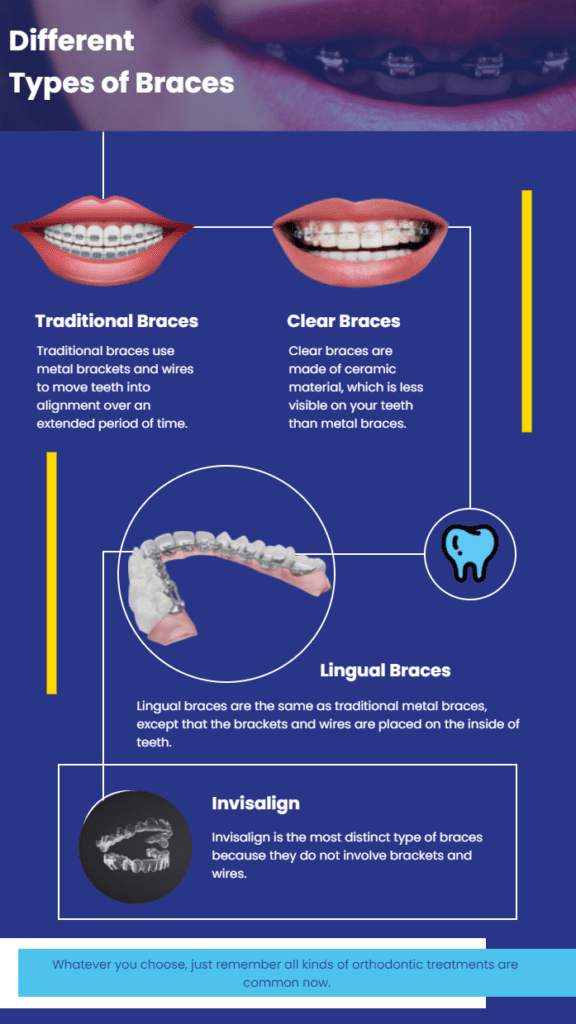Specialist Cumming Braces and Aligners: What to Know Prior To You Go to
Specialist Cumming Braces and Aligners: What to Know Prior To You Go to
Blog Article
Comprehensive Overview to Orthodontics Treatments for Remedying Dental Imbalances
Understanding the ins and outs of each procedure, including their devices, advantages, and potential disadvantages, is important in making informed decisions about one's orthodontic treatment. As we browse via the extensive overview to orthodontic procedures for remedying oral imbalances, the complex details of each technique will unfold, dropping light on the course towards a unified and functional oral placement.
Orthodontic Procedures Review

Along with clear aligners and conventional dental braces, orthodontists may also suggest other interventions like headwear, palatal expanders, or retainers to deal with details alignment issues (braces). These treatments are customized per client's one-of-a-kind needs and may entail a mix of therapies to accomplish the desired results. Regular changes and monitoring are essential parts of orthodontic therapy to make certain development is on track and to make any kind of essential alterations along the way. By going through orthodontic procedures, patients can not just achieve a straighter grin however additionally boost their general dental health and wellness and feature.
Typical Braces: How They Work
When taking into consideration orthodontic therapies for dental misalignments, standard braces stand out as a reliable approach for fixing teeth placing. Conventional dental braces contain brackets, cables, and bands that interact to apply continuous stress on the teeth, slowly moving them right into the desired placement. The brackets are connected to the teeth making use of an unique adhesive, and the cables are threaded via the brackets. By adjusting the stress of the cables, orthodontists can regulate the instructions and force used to each tooth, guiding them into correct alignment gradually.
One trick element of how traditional braces job is the process of bone makeover. As stress is related to the teeth through the dental braces, the bone surrounding the teeth is improved to sustain the new tooth settings. This makeover is vital for the long-lasting stability of the dealt with placement. Patients will need regular adjustments at the orthodontist's office to make sure the braces remain to apply the right stress for efficient teeth motion.
Invisible Aligners: Disadvantages and pros
Unnoticeable aligners supply a very discreet and convenient alternative to traditional dental braces for remedying oral misalignments. These clear, personalized trays are virtually invisible when worn, making them an attractive choice for people seeking an extra cosmetically pleasing orthodontic treatment. Among the main benefits of unnoticeable aligners is their removability, permitting for simpler upkeep of dental health contrasted to traditional braces. People can eliminate the aligners prior to eating or cleaning their teeth, lowering the risk of food getting embeded the appliance and simplifying the cleaning procedure.

Surgical Orthodontic Options
Surgical interventions in orthodontics existing practical options for addressing complicated dental misalignments that might not be efficiently fixed with traditional orthodontic treatments. While conventional dental braces and unnoticeable aligners can deal with many orthodontic issues, specific situations need medical intervention to achieve ideal results. Surgical orthodontic choices are typically suggested for severe malocclusions, substantial jaw inconsistencies, and instances where the underlying bone structure needs adjustment to attain appropriate alignment.
One typical surgical orthodontic procedure is orthognathic surgical treatment, which entails rearranging the jaws to correct useful problems such as trouble speaking or eating. This surgical procedure is frequently carried out in collaboration with an orthodontist who assists line up the teeth before and after the procedure. Surgical orthodontics might additionally entail treatments to subject impacted endodontic surgery teeth, get rid of excess periodontal tissue, or reshape the jawbone to produce an extra harmonious face profile.
Prior to thinking about medical orthodontic alternatives, patients undertake a detailed analysis to determine the requirement and possible advantages of such interventions. cumming orthodontist. While surgical treatment might appear difficult, it can dramatically improve both the feature and aesthetics of the smile in instances where standard orthodontic therapies fall short
Retainers and Post-Treatment Care

Failing to comply with post-treatment care directions can result in relapse, where the teeth gradually move back in the direction of their initial settings. Constant retainer wear, good dental health, and routine oral check-ups are crucial for keeping the results achieved through orthodontic surgery and guaranteeing the long-lasting security of the remedied oral alignment.
Verdict
In final thought, orthodontic treatments offer various alternatives for dealing with oral imbalances. Conventional dental braces use metal braces and cables to move teeth into appropriate placement. Unseen aligners offer a more discreet choice however may not be appropriate for all cases. Surgical orthodontic options are readily available for extra severe misalignments. Retainers are commonly used post-treatment to preserve the new positioning. Overall, orthodontic treatments can effectively improve oral health and wellness and aesthetic look.
As we browse via the detailed guide to orthodontic dental implant care treatments for fixing oral misalignments, the complex information of each approach will unfold, shedding light on the course towards a harmonious and practical dental placement. - orthodontics
One of the most common orthodontic treatments is the usage of dental braces, which are composed of steel braces and cables that use mild pressure to gradually shift teeth into the wanted position.When taking into consideration orthodontic therapies for dental misalignments, typical braces stand out as a time-tested technique for fixing teeth positioning. Furthermore, unnoticeable aligners may not be ideal for complicated orthodontic concerns that need more considerable teeth movement, as they are typically suggested for mild to moderate cases. Retainers are tailor-made orthodontic devices made to hold teeth in their corrected positions after the conclusion of orthodontic treatment.
Report this page